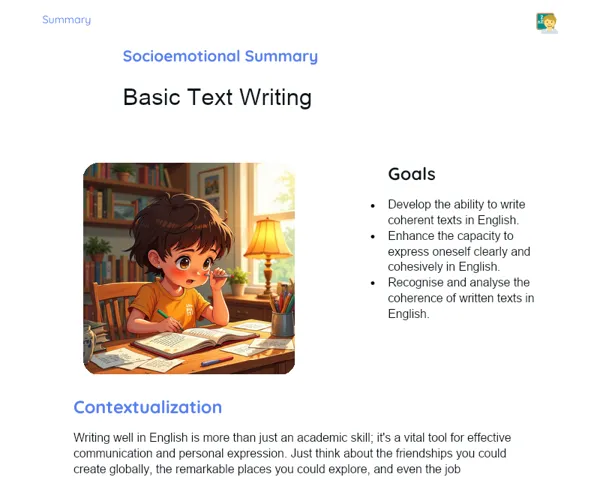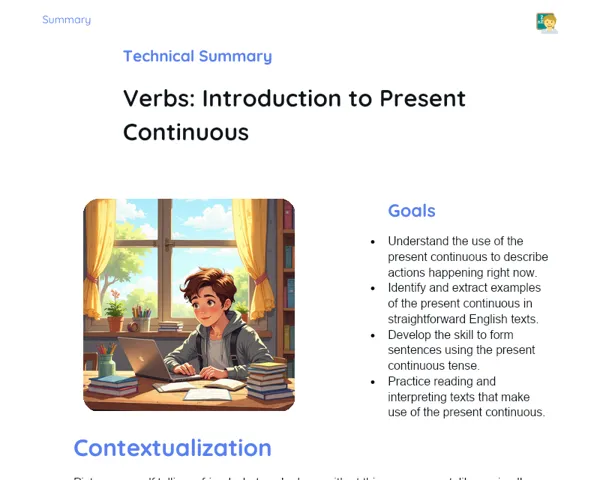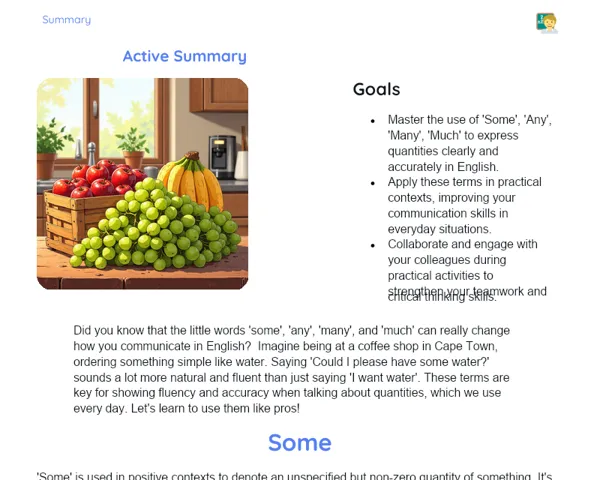Goals
1. Grasp the concept of paraphrasing.
2. Identify various ways to convey the same idea using different words.
3. Recognise and apply paraphrases in different settings.
4. Cultivate the skill of creatively rewriting texts.
Contextualization
Paraphrasing is a vital skill in communication and writing, enabling us to express ideas in diverse ways without losing their original essence. Think of explaining a complicated idea to different groups: a mate, a teacher, or a set of colleagues. Each might require a unique approach, yet the core message remains unchanged. For instance, if you're explaining 'gravity' to a child, you might say, 'Gravity is what makes things fall down,' but for an adult, you could say, 'Gravity is the force that pulls two objects towards one another.' The ability to effectively rephrase our thoughts is incredibly valuable, whether in one’s studies or professional life.
Subject Relevance
To Remember!
Concept of Paraphrasing
Paraphrasing involves rephrasing a text or speech while keeping the same meaning, but using different words. This skill is essential to ensure the message is clear and understood across various contexts and audiences.
-
Rewording the text while keeping the original meaning intact.
-
Using synonyms and varying sentence structures.
-
Importance of clear and effective communication.
Importance of Paraphrasing in Communication
Paraphrasing is a foundational skill to prevent miscommunication and ensure that the message is correctly grasped by the listener. It allows us to adjust how we communicate to suit different audiences and contexts, making the information easier to understand.
-
Prevents misunderstandings in communication.
-
Tailors the message for different listeners.
-
Enhances the understanding of information.
Strategies for Creating Effective Paraphrases
To create effective paraphrases, it's important to fully comprehend the original text, highlight the key ideas, and employ synonyms and different sentence structures to relay the message without changing its meaning. Practising rewording sentences and reviewing your text for coherence and clarity are key steps.
-
Comprehending the original text.
-
Spotting the main ideas.
-
Using synonyms and altering sentence structures.
-
Reviewing for coherence and clarity.
Practical Applications
-
Translating texts, where adapting the message to fit the cultural and linguistic context of the target audience is crucial.
-
Drafting reports and emails in a workplace where clarity and precision are critical.
-
Creating marketing material that speaks to different target audiences while keeping the original intent intact.
Key Terms
-
Paraphrase: Rewording of a text or speech while keeping the same meaning.
-
Synonym: A word that means the same or nearly the same as another.
-
Coherence: The quality that links parts of a text together.
-
Clarity: The quality that makes a text easy to understand for the reader.
Questions for Reflections
-
How can improving your paraphrasing skills enhance your daily communication?
-
What challenges have you encountered while creating paraphrases, and how did you tackle them?
-
In what work scenarios do you think paraphrasing can be particularly useful?
Creative Paraphrasing Challenge
This mini-challenge is designed to reinforce your understanding of paraphrasing through a practical and enjoyable activity.
Instructions
-
Select a recent news article from a trusted news source.
-
Read through the article thoroughly and identify the key information.
-
Compose a paragraph summarising the article in your own words, using synonyms and varied sentence structures while retaining the original meaning.
-
Share your paragraph with a colleague and ask them to pinpoint the main information and compare it with the original article.
-
Engage in a discussion with your colleague about the clarity and precision of your paragraph to confirm that the message was preserved.



